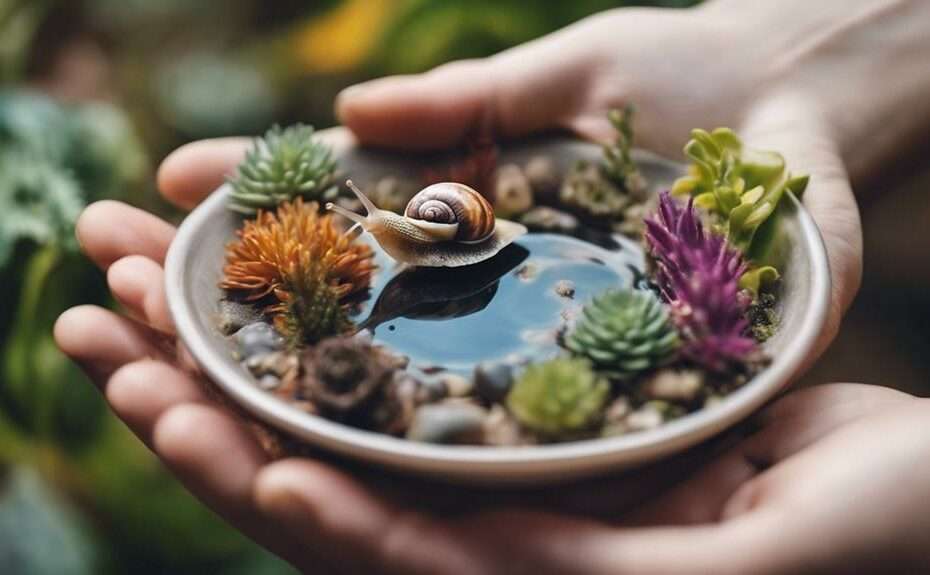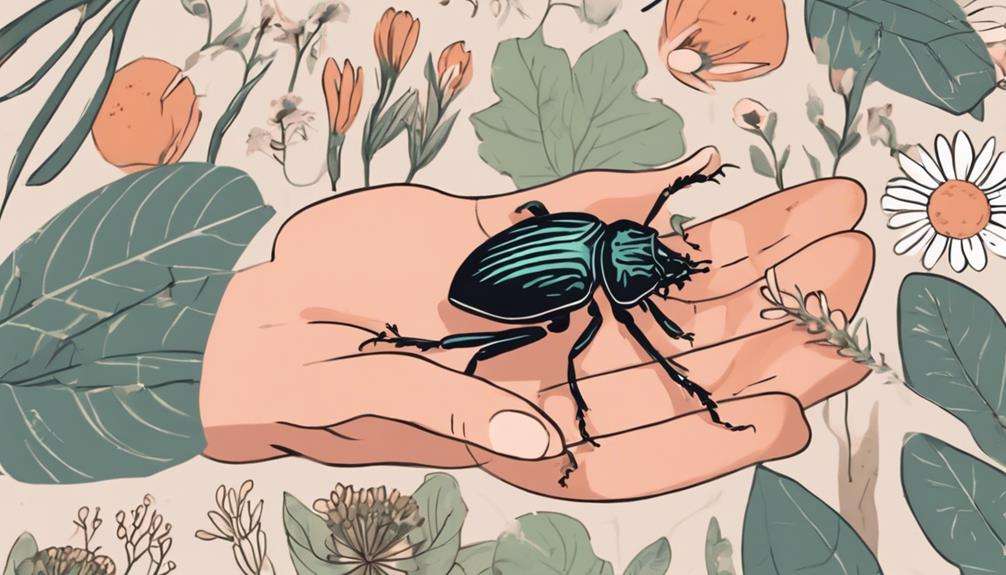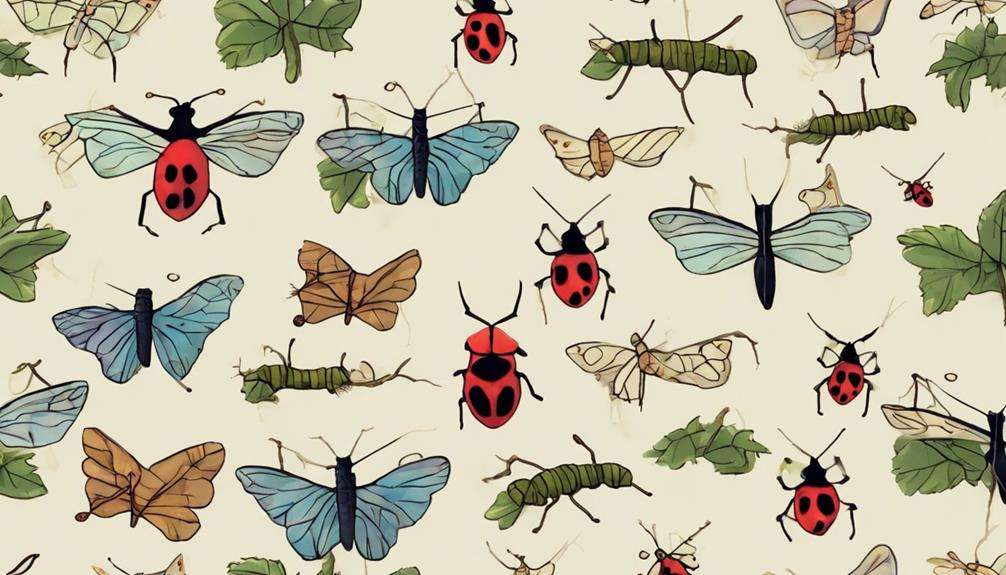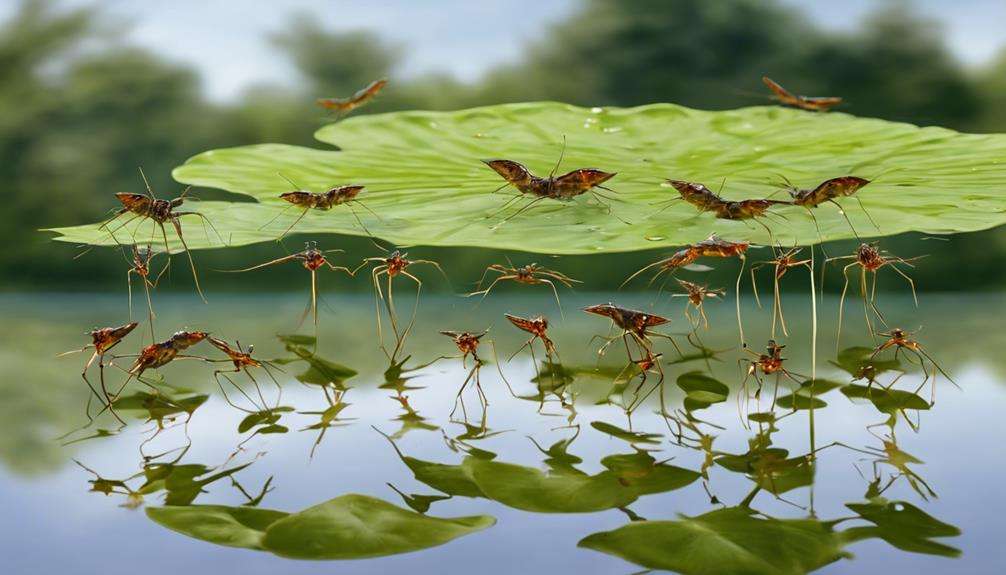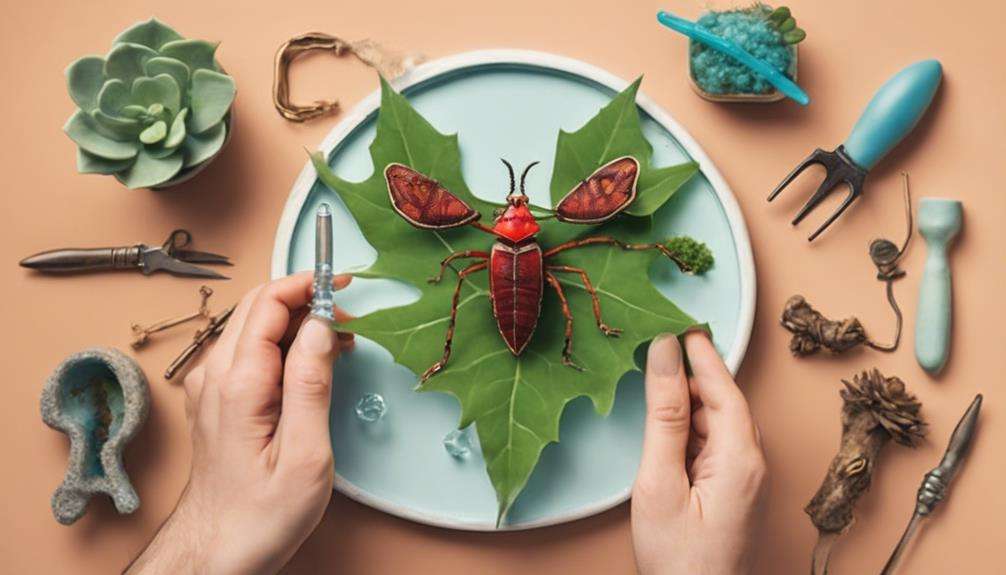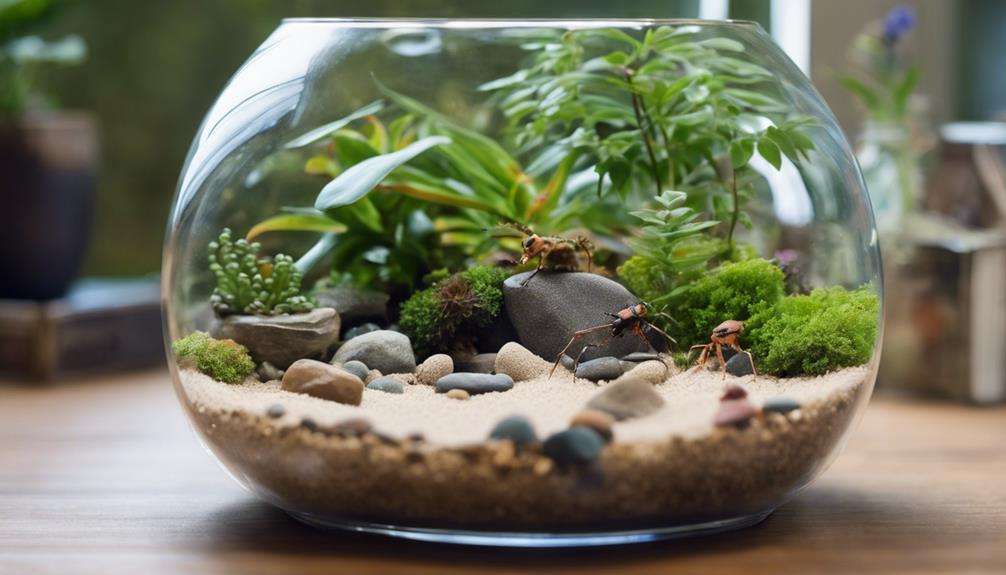When caring for pet snails, starting with suitable shelter and sustenance is significant. But have you pondered the peculiar preference for calcium that these shelled companions possess?
Understanding this essential element in their diet could be the key to accessing a thriving snail habitat. Intriguing insights into their calcium cravings await, shedding light on the importance of this mineral for your pet snail's health and happiness.
Key Takeaways
- Snail care involves gentle handling, proper diet, and suitable habitats for health.
- Health issues require prompt veterinary care and preventive measures for well-being.
- Understanding snail behavior, habitat setup, and activity patterns is crucial for optimal care.
- Ensure hygiene, hydration, and environmental enrichment for happy and healthy pet snails.
Snail Species Overview
When considering pet snail care, it's important to begin with a thorough understanding of the various snail species commonly kept as pets. Some of the most popular snail species for pet enthusiasts include the Garden Snail, Land Snail, and European Brown Snail, scientifically known as Cornu aspersum. These snails typically have a shell size ranging from 1 to 1 5⁄8 inches in diameter and 1 to 1 3⁄8 inches high. In relation to lifespan, most pet snails live for about 2-3 years, although some may surpass this while in captivity.
These snails are beloved for their docile nature, which makes them excellent companions for both adults and children alike. Their unique locomotion, characterized by their slow and steady movement, adds to their charm. Additionally, their ease of care makes them ideal for beginner pet owners looking to venture into the world of exotic pets. Understanding the specific characteristics and requirements of each snail species is fundamental to providing the best care and ensuring a happy and healthy life for your pet snail.
Behavior and Temperament
Snails have fascinating activity patterns, from their slow-paced movements to their climbing abilities.
Understanding their social interactions with other snails can provide insight into their behavior.
When handling snails, remember to do so gently and avoid picking them up by their shell to guarantee their well-being and comfort.
Snail Activity Patterns
Have you ever wondered about the activity patterns and temperament of these fascinating nocturnal and crepuscular creatures known as snails?
Snails are most active during dusk and dawn, displaying their slow-paced movement and unique feeding habits. These docile creatures prefer environments with dim lighting and high humidity levels to thrive.
Understanding their activity patterns is important for ensuring their well-being and providing enrichment in captivity. By observing and accommodating their natural behaviors, such as their nocturnal and crepuscular tendencies, you can create a suitable habitat that promotes their health and happiness.
Social Interactions of Snails
Solitude characterizes the social interactions of snails, as they typically prefer to lead solitary lives without seeking companionship from other members of their species. While snails may not be social creatures, they exhibit exploratory behavior by climbing and moving around to find food and shelter.
Communication among snails occurs through touch, taste, and chemical signals rather than vocalizations. Their slow pace of movement is a defining trait, making their behaviors and habits fascinating to observe. Even though they don't engage in complex social interactions, snails still display intriguing behaviors within their environment.
Understanding their solitary nature and unique communication methods can help you provide a suitable habitat for your pet snail's social interactions.
Handling and Care Tips
When caring for pet snails, ensuring gentle handling techniques is essential to maintain their well-being and safety. These docile creatures don't bite and are safe to handle, but it's important to handle them with care to avoid any harm.
Avoid picking up a snail by its shell, as it can cause damage. Snails have the ability to climb, so providing a secure and climbable environment in their habitat is important.
When handling your pet snail, remember to scoop them up gently underneath their foot to prevent any potential harm to their delicate shells. By following these tips, you can guarantee a safe and comfortable environment for your pet snail.
Handling Tips and Techniques
Before handling your pet snail, remember to wash your hands to secure hygiene and prevent infections.
When picking up your snail, use a gentle touch underneath its foot to avoid causing harm or stress. It's important to avoid picking up your snail by its shell to prevent damage to its delicate body.
If children are handling the snail, make sure they're supervised to prevent accidental harm or ingestion.
Create a safe and secure environment for your snail to explore, minimizing the risk of falls or injuries during handling.
By washing your hands before and after, you maintain hygiene and reduce the chances of infections for both you and your snail.
Housing Requirements for Snails
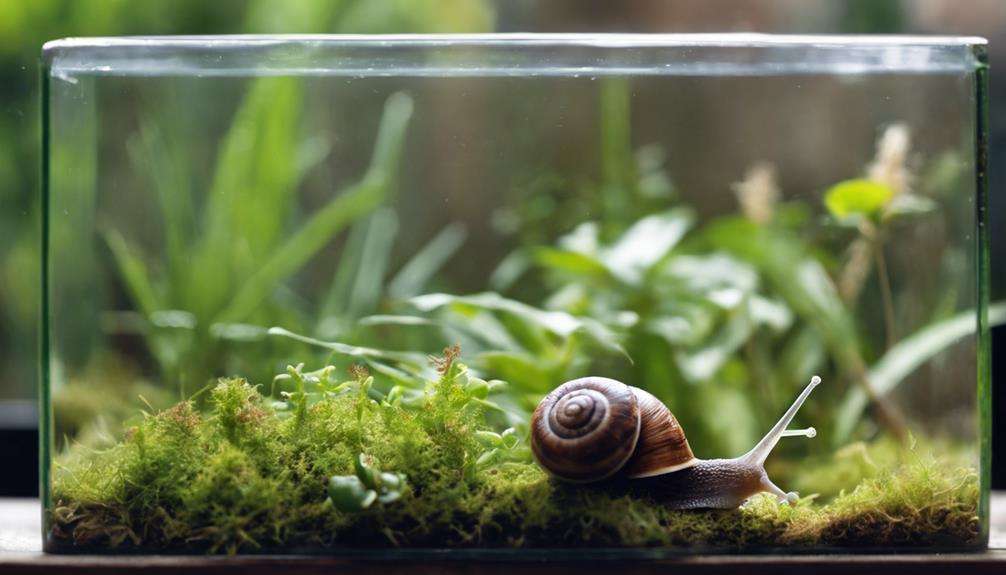
After ensuring proper handling techniques, the next step is to provide suitable housing requirements for your pet snail.
Snails thrive in glass terrariums that offer good ventilation and a secure lid to prevent escapes. Make sure there's a shallow water dish inside for humidity and bathing needs. Use natural substrates like compost, coconut fiber, or sphagnum moss to create a comfortable environment for burrowing and hiding.
It's important to monitor humidity levels with a hygrometer and provide shelters like small caves or hollow logs for your snails to feel secure. Enhance their living space by decorating with safe items such as sticks and live plants, offering enrichment opportunities for your snail to explore and interact with their surroundings.
Remember to keep the environment clean and maintain a consistent temperature to ensure the well-being and happiness of your pet snail.
Dietary Needs and Hydration
When caring for your pet snail, remember to provide a varied diet of fresh vegetables and fruits to make certain they receive essential nutrients. Offering calcium sources like cuttlebone or ground eggshells will support their shell growth and repair.
Keep a shallow dish of filtered water accessible at all times to make sure your pet snail is hydrated and healthy.
Feeding Essentials
To guarantee your pet snail's peak health and well-being, it's essential to provide a diet rich in fresh vegetables, fruits, calcium, and a small amount of protein.
Snails, being herbivores, thrive on pesticide-free produce such as leafy greens, carrots, apples, bananas, and cucumbers. Make sure they've access to a shallow dish of filtered water for hydration.
Including calcium sources like cuttlebone or ground eggshells in their diet is important for shell growth and repair. Supplement their meals with occasional protein sources such as bloodworms or fish flakes to maintain a balanced nutritional intake.
Watering Tips
Shifting from ensuring your pet snail's nutritional needs are met, let's now focus on the importance of proper hydration through watering tips.
Snails require a shallow dish of filtered water for hydration and bathing. Maintain a consistent humidity level by misting the substrate with filtered water to prevent dehydration. Avoid using deep containers for water as they can lead to drowning incidents.
Regularly monitor the water dish for cleanliness, refilling it as needed to guarantee your snail's health. Adequate hydration is critical for promoting healthy shell growth in snails.
Common Health Issues and Care
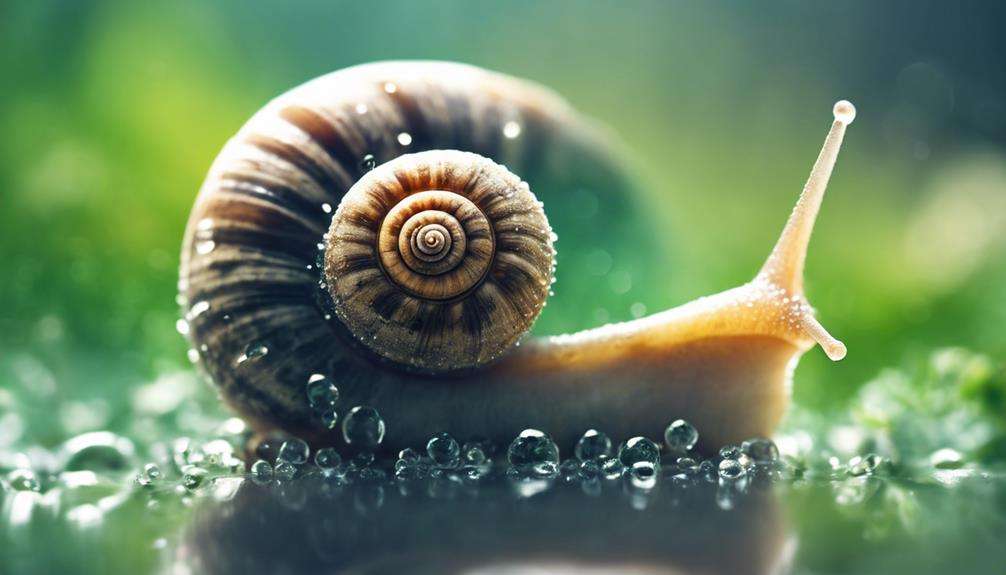
To guarantee the well-being of your pet snail, it's essential to be vigilant about common health issues and provide proper care. Common health issues in pet snails include shell damage, dehydration, and calcium deficiency. Regularly check for signs of illness such as lethargy, lack of appetite, or abnormal shell growth to address any problems promptly.
Make sure your snail's diet is balanced and includes adequate calcium, vitamins, and minerals to prevent health issues. Maintaining proper humidity levels and substrate moisture is critical for supporting your snail's overall health and well-being.
If you notice any concerning symptoms or behaviors, seek veterinary care from a specialized exotics or invertebrate veterinarian. These professionals have the expertise to diagnose and treat specific health concerns in snails. Remember, early detection and intervention are key to ensuring your pet snail leads a healthy and happy life. Stay attentive to your snail's well-being and provide the necessary care to prevent common health issues from arising.
Frequently Asked Questions
How Do You Take Care of a Pet Snail?
To care for a pet snail, create a suitable habitat with proper ventilation, feed a balanced diet, handle gently, maintain shell integrity, provide adequate water, control the temperature, clean regularly, monitor health, understand social behaviors, and manage growth stages appropriately.
Are Pet Snails High Maintenance?
You'll find pet snails to be low-maintenance companions, not requiring constant care. Feeding isn't a daily task, and upkeep is simple. These hardy creatures thrive in basic habitats. Overall, they're an easy and unique pet choice.
What Do You Need to Know Before Getting a Snail?
Before getting a snail, research various snail species to find one suitable for you. Set up their habitat with proper ventilation, a nutritious diet, and maintain an ideal temperature. Learn handling techniques, observe social behaviors, and be prepared for potential health concerns.
Can I Keep a Snail I Found Outside?
You shouldn't maintain a wild snail found outside as a pet. They may carry parasites and have specific needs hard to replicate in captivity. Admire them in their habitat. Guarantee a pet snail from a reputable source for proper care and health.
Conclusion
As you start on the journey of pet snail care, remember that these tiny creatures are like delicate jewels in your terrarium, requiring your attentive care and nurturing touch.
By providing them with a safe and enriching environment, a nutritious diet, and regular health checks, you can guarantee that your snails thrive and flourish like precious gems in a hidden treasure trove.
Embrace the joy of caring for these unique companions and watch them sparkle with vitality and beauty.
